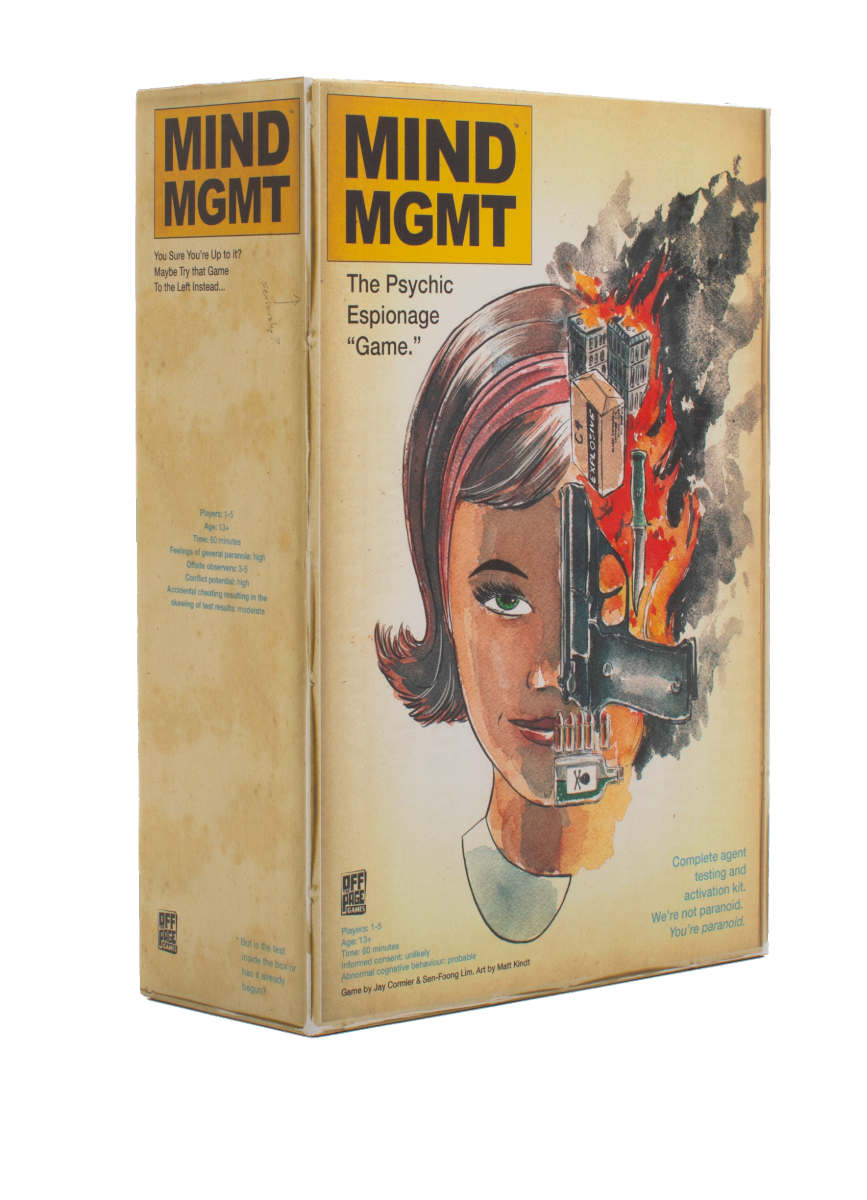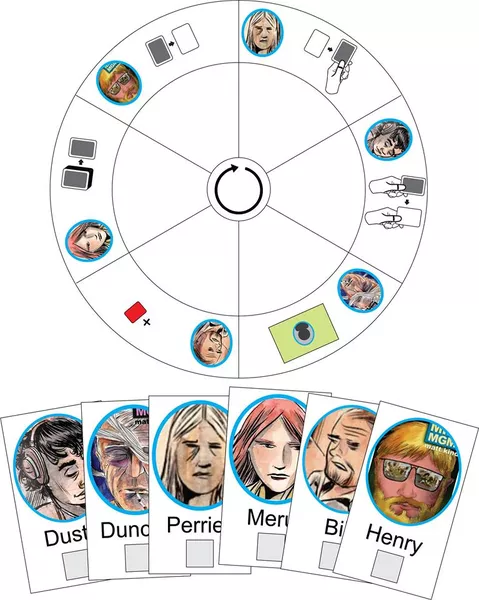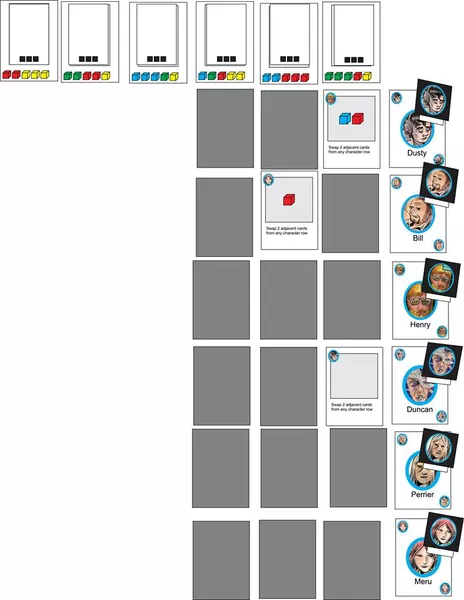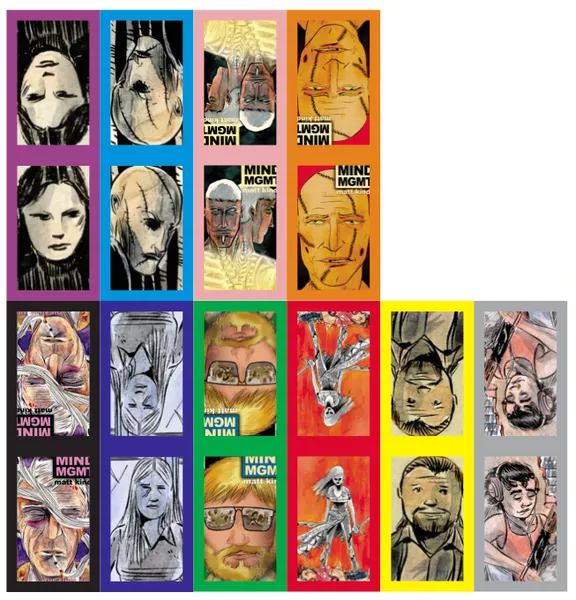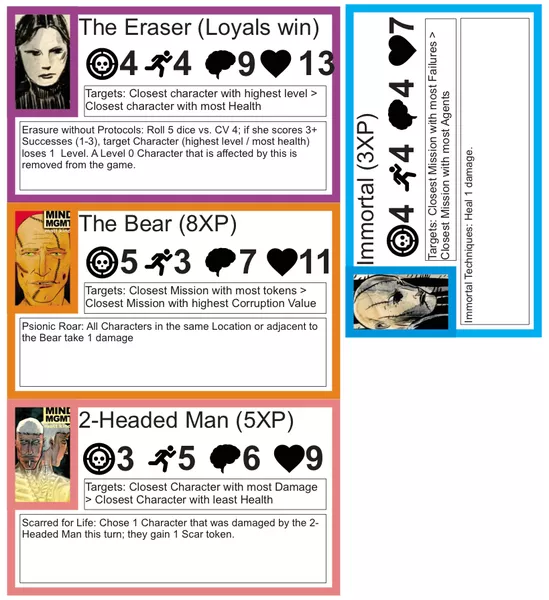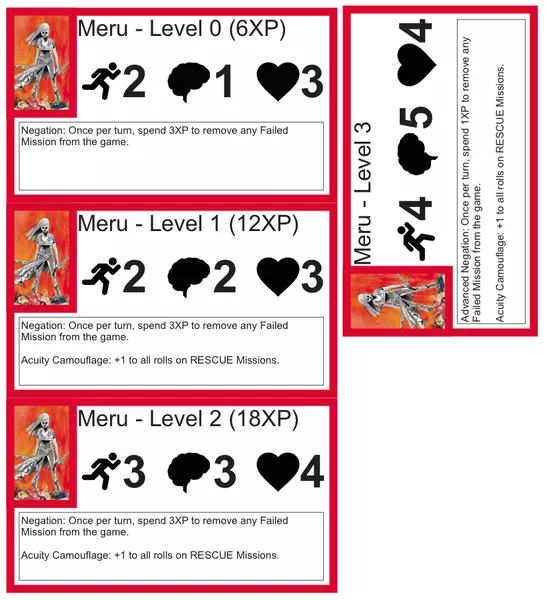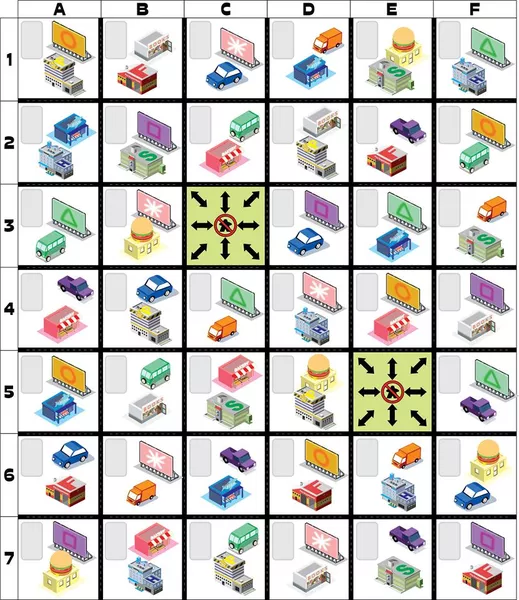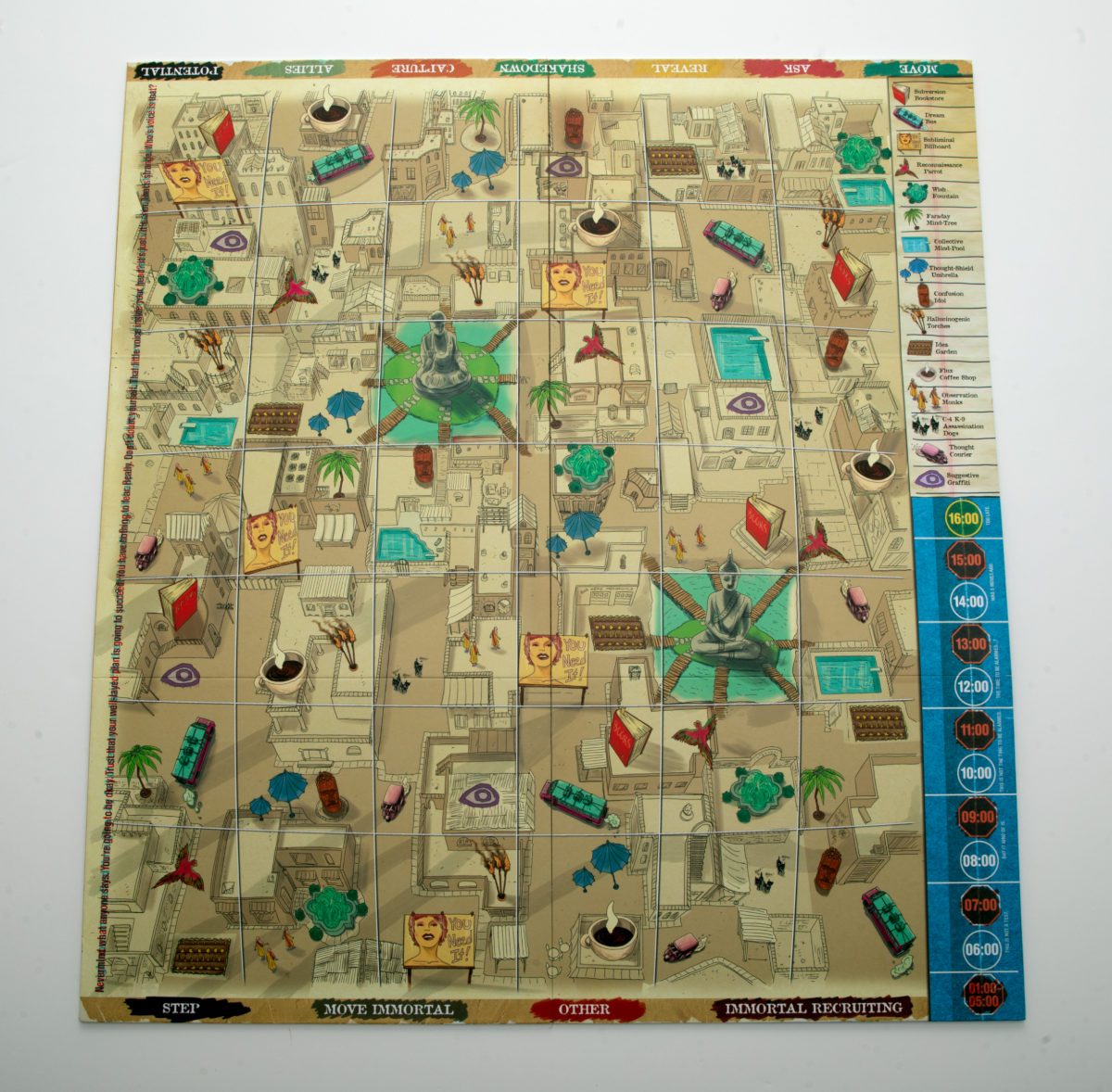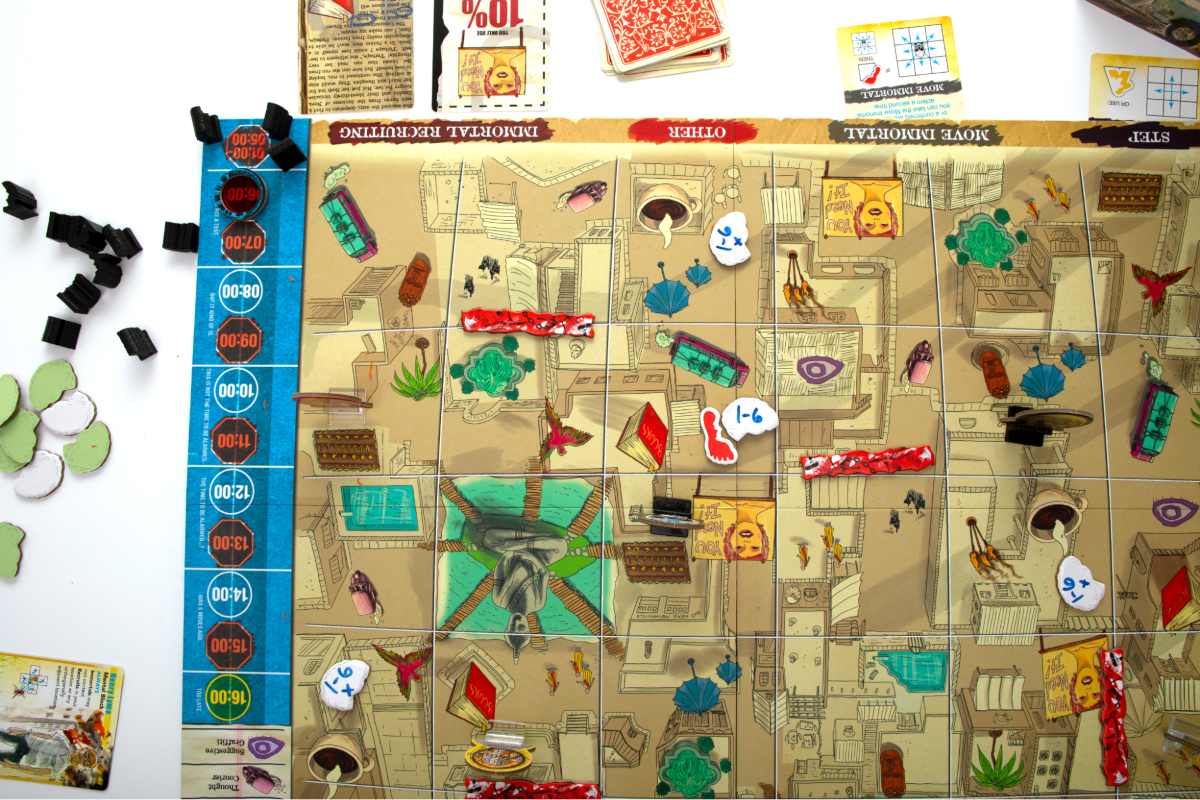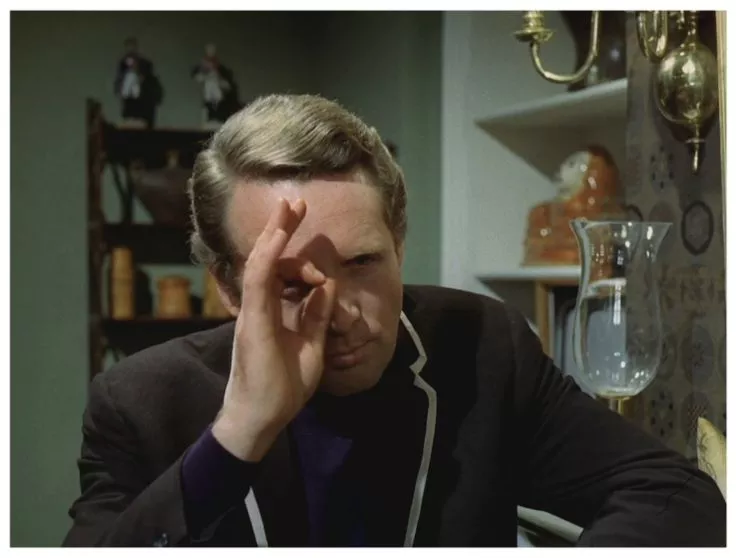The world can be a vast and confusing place, and there can be a great comfort in discerning order through disorder with all that information. Sometimes that manifests in organized systems that make our lives easier and more efficient. Other times, though, people read into things that simply don’t connect and end up going down all sorts of rabbit holes of mistaken assumptions, disinformation, and more conspiracy theories than, well, many corners of today’s internet.
As it happens, in the hidden movement game MIND MGMT hidden movement game, it turns out there really is a shadowy cabal intent on consolidating power and manipulating world events. So, you know, broken clock and all that. Your goal, as you’d expect is to bring light to such conspiracy and put a stop to their efforts.
To learn more about the origins and genesis of this One Vs Many setting and the clever spin it takes on the genre, we turned to one of the co-designers themselves, who walks us through just how we got the game you see before you.
Editor’s Note: We take no culpability should you infer any perceived patterns or in reading between the lines…
MIND MGMT Designer Diary
Great games aren’t made overnight, or so they say, and MIND MGMT is no different. One design tenet that Jay and I hold ourselves to is that we want to remain as versatile as possible and never rest on our laurels. To that end, when we first discussed making a game set in a world secretly policed by superspies with psychic powers with the series’ creator, the illustrious Matt Kindt, we wanted to make a style of game that we’d never designed before. One of the possibilities that we toyed with was a social deduction game in which players had psychic powers to try to find the Eraser.
From there, we moved to a tableau-building game that dealt with building memories and shifting them between players to create the correct timeline.
Lastly, we made a full co-op game in which players would try to solve problems that cropped up across the globe without letting MIND MGMT agents establish a foothold.
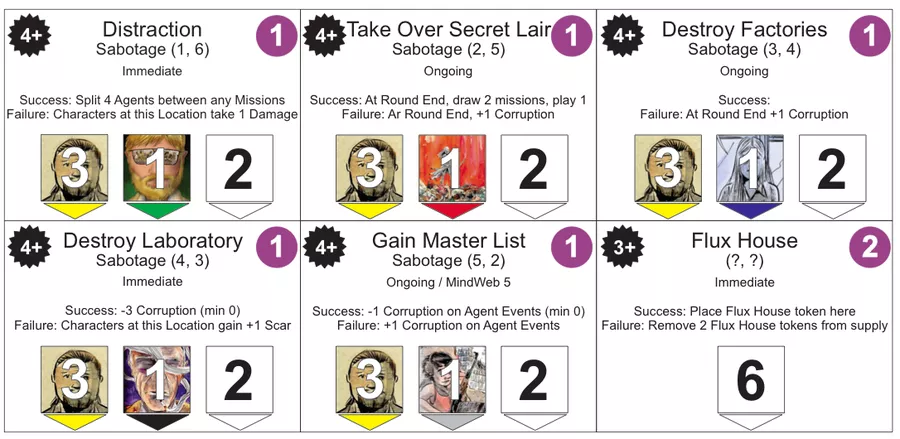 Unlike the other attempts, the one we settled on (a one-vs-many hidden movement game) had real legs because it really captured all of the experiential elements that Matt wanted in the game – the feelings of paranoia, of needing to protect your thoughts from being read, and of using psychic powers to achieve your end goals. X-acto knife in hand, we set about creating the first prototype, cutting card after card after card.
Unlike the other attempts, the one we settled on (a one-vs-many hidden movement game) had real legs because it really captured all of the experiential elements that Matt wanted in the game – the feelings of paranoia, of needing to protect your thoughts from being read, and of using psychic powers to achieve your end goals. X-acto knife in hand, we set about creating the first prototype, cutting card after card after card.
Several iterations later, Jay and I were ready to unleash the design on an unsuspecting public! After playing it incessantly with our own test groups in Vancouver, British Columbia and London, Ontario as well as showing it to our friends in the Game Artisans of Canada, we felt that we were ready to playtest it publically.“Fail Faster” is one of our mottos – and wow, did we ever fail fast! Even with such skilled players as Matt Leacock of Pandemic fame testing the game (or maybe because of Matt…), the game failed to produce the same response we had gotten from our own playtest groups. How could this be? Our game had melted Matt’s brain! User experience of our playtesters at home actually became our undoing. Since we had played with roughly the same two groups over and over again, their suggestions, though great, had lead to feature and complexity creep! Even some of the greatest designers in the world couldn’t cope with the amount of complexity we had put in the box on their first play!
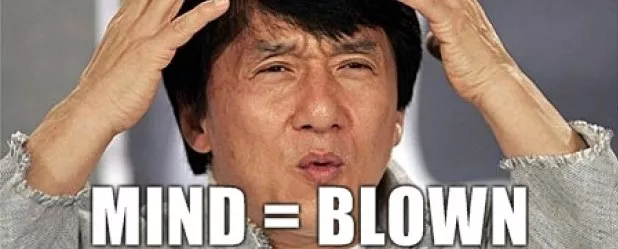 Distraught, we had to go back to the drawing board. On reflection, we realized what had happened yet couldn’t rectify how we were going to deal with the problem of having so much content to deliver but only limited amounts of tolerance from players for all of these cool features that we wanted to keep. Thus began the arduous process of trying to remove elements from the game in order to make that first play as accessible as possible to the majority of players. Cutting things out proved to be difficult as so much of what we had designed was really, really innovative for the type of game.
Distraught, we had to go back to the drawing board. On reflection, we realized what had happened yet couldn’t rectify how we were going to deal with the problem of having so much content to deliver but only limited amounts of tolerance from players for all of these cool features that we wanted to keep. Thus began the arduous process of trying to remove elements from the game in order to make that first play as accessible as possible to the majority of players. Cutting things out proved to be difficult as so much of what we had designed was really, really innovative for the type of game.
 Once again, however, Matt Leacock (along with Rob Daviau) came to the rescue. Matt and Rob had hit the top of the charts with this game that you might have heard of. Anyone ever hear of a little game called Pandemic: Legacy? Now, Jay and I had long wanted to make a Legacy game and were sensitive to the comments from many gamers who stated that they did not like the destructible aspect of Legacy games nor the permanent and finite nature of some of the earlier attempts at this subgenre. Dissecting what made Legacy games interesting, we decided upon retaining the ideas that past outcomes should dictate future changes and that secrets must be revealed over time. Even with these concepts in mind, it took a lot of work to determine the order with which all of the content was to be revealed and which modules worked best together.
Once again, however, Matt Leacock (along with Rob Daviau) came to the rescue. Matt and Rob had hit the top of the charts with this game that you might have heard of. Anyone ever hear of a little game called Pandemic: Legacy? Now, Jay and I had long wanted to make a Legacy game and were sensitive to the comments from many gamers who stated that they did not like the destructible aspect of Legacy games nor the permanent and finite nature of some of the earlier attempts at this subgenre. Dissecting what made Legacy games interesting, we decided upon retaining the ideas that past outcomes should dictate future changes and that secrets must be revealed over time. Even with these concepts in mind, it took a lot of work to determine the order with which all of the content was to be revealed and which modules worked best together.
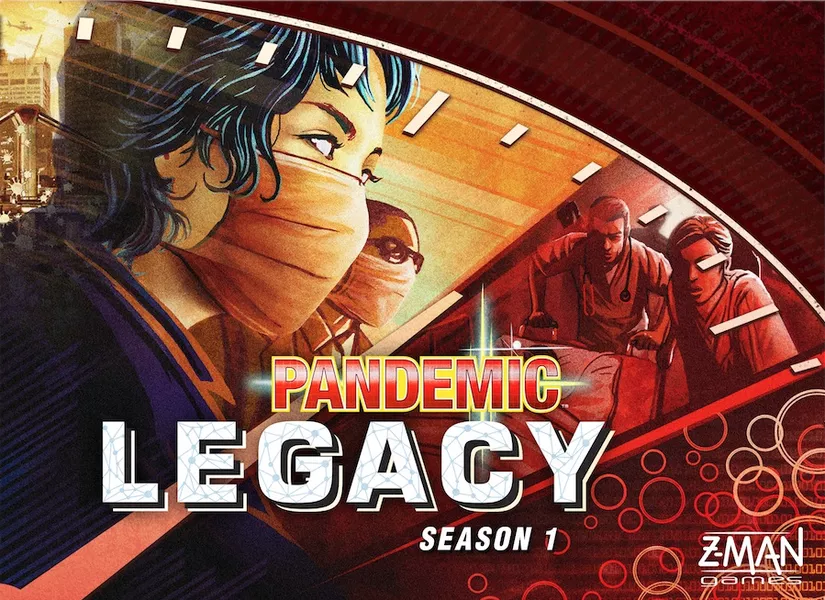 Next on our list was ensuring that the experience reflected the source material. The thing about working with someone else’s intellectual property is that you have to respect not only what the creator wants out of the game, but what the fans want. Exploring the graphic novels again and getting ideas from Matt Kindt helped us rework the various modules in terms of order and effect. Ready to test things on the table again, we dubbed our new content delivery model the “Shift System” because the modules would only be unlocked by the losing side between games – it would literally shift the balance in their favour for the next game! This proved to be something extra special! Here was a game that used to not only melt people’s brains but take a longer time to play. Eliminating all of the content with the exception of the modules chosen after the last game both sped up gameplay and reduced the cognitive load in a game that already has logic and deduction at the forefront.
Next on our list was ensuring that the experience reflected the source material. The thing about working with someone else’s intellectual property is that you have to respect not only what the creator wants out of the game, but what the fans want. Exploring the graphic novels again and getting ideas from Matt Kindt helped us rework the various modules in terms of order and effect. Ready to test things on the table again, we dubbed our new content delivery model the “Shift System” because the modules would only be unlocked by the losing side between games – it would literally shift the balance in their favour for the next game! This proved to be something extra special! Here was a game that used to not only melt people’s brains but take a longer time to play. Eliminating all of the content with the exception of the modules chosen after the last game both sped up gameplay and reduced the cognitive load in a game that already has logic and deduction at the forefront.
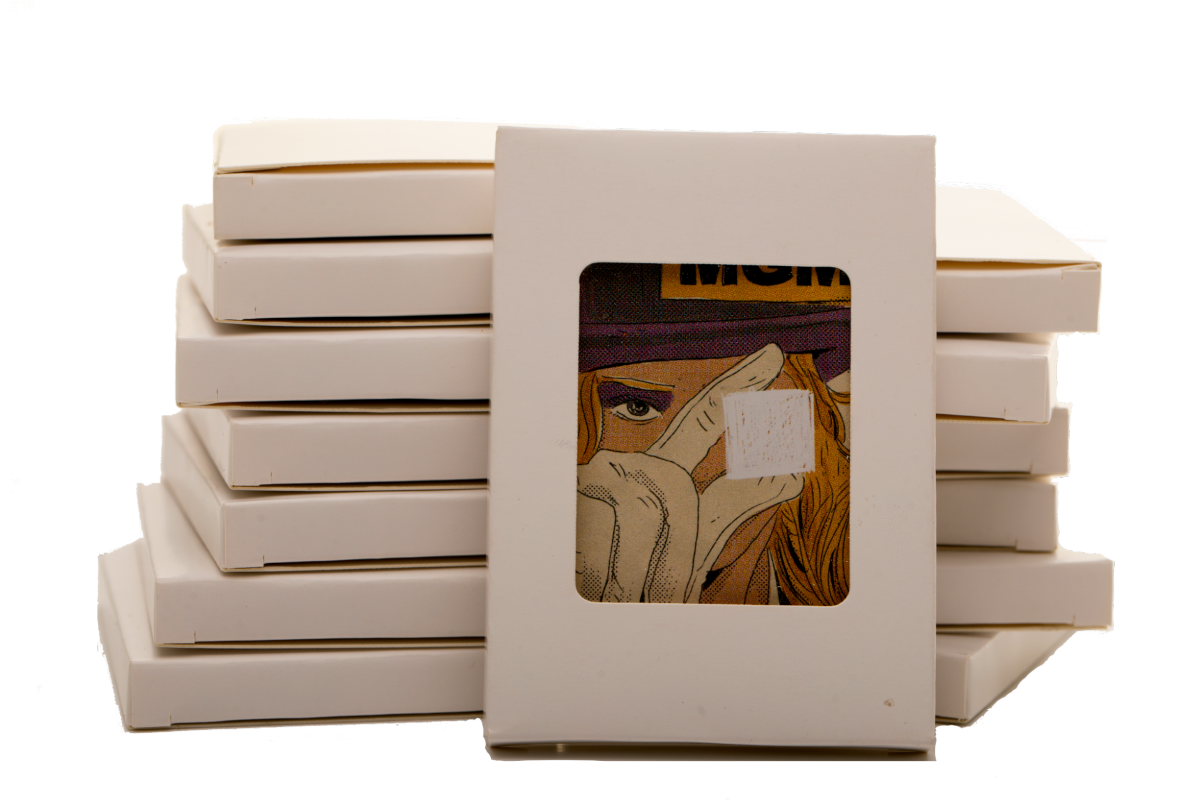 When we presented this final idea to Matt Kindt, he was really pleased. One thing he wanted in the game since it was based on his story, was a sense of a narrative arc. Revealing the SHIFT System modules slowly over multiple plays inherently builds that narrative and allows players to create their own by giving them the ability to pick and choose their modules from the ones they have opened. Discussing which modules to take and predicting future outcomes because of their choices became the “meta” that players would engage in between games.
When we presented this final idea to Matt Kindt, he was really pleased. One thing he wanted in the game since it was based on his story, was a sense of a narrative arc. Revealing the SHIFT System modules slowly over multiple plays inherently builds that narrative and allows players to create their own by giving them the ability to pick and choose their modules from the ones they have opened. Discussing which modules to take and predicting future outcomes because of their choices became the “meta” that players would engage in between games.
Designing MIND MGMT has been one of our greatest accomplishments in the hobby game field to date. Everything about it, from initial concepts to final design has been in our hands and we couldn’t be prouder of the final results. Seeing fans of our games, of gaming in general, and of MIND MGMT specifically all unite to bring this game to life has been nothing short of spectacular to be a part of. In starting Off The Page Games with the mandate to make games for creator-owned comic books, Jay has made a commitment to give creators and fans alike another way to enjoy their favourite characters and stories on the tabletop. Games can engage and tell stories beyond the pages of the comic book. New tales can be told on the tabletop in a way that sequential storytelling may not be able to do. Ever the explorers, Jay and I hope to forge new worlds for your favourite comic book characters to play in. Really, that’s all we’ve ever wanted to do since we were nerdy kids, flipping through the pages of our favourite comics back in the day. So thank you all for supporting MIND MGMT and making our 4-colored dreams come true!

